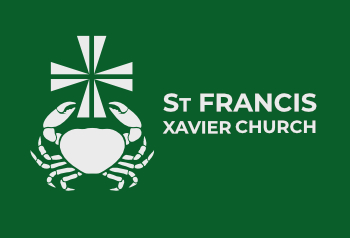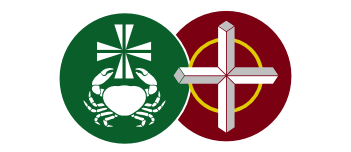
History
St Francis Xavier & St John the Evangelist
St Francis Xavier, the Patron Saint of Frankston Catholic Parish, was born in Basque speaking Spain on the 7thApril 1506.
In his early years he was headed for an academic career, but fell under the gently powerful influence of Saint Ignatius Loyola while he was studying at the University of Paris. He became a member of the founding group of the Society of Jesus – the Jesuits – in 1534. During this time he poured his life out in preaching and teaching the Gospel, and had an extraordinary devotion to caring for the sick.
In 1541 he was chosen to undertake his life’s work – to preach the Gospel in Asia. He sailed from Portugal, and after a long and harrowing journey he arrived in Goa on the southern coast of India on the 6th May 1542.
In a brief ten years, he baptized thousands establishing communities of faith. He visited India, Sri Lanka, Malacca (Malaysia), and many of the islands of Indonesia. He also made a small but very profound impression on Japan – planting a Christian community there that was later to undergo a fierce persecution. He was heading for China when he was taken ill, and died on a desolate island off the Chinese coast on the 3rd December 1552. His body was taken back to India, where he is buried in the Basilica of the Good Jesus, Goa. He was declared a saint in 1622.
One of the legends of St. Francis Xavier is recalled in the large stained glass window by the artist Alan Sumner on the side wall of the Frankston Church. It shows Francis disembarking from the ship on one of his many journeys in South-East Asia. As he steps into the little boat which is to take him ashore, his mission cross falls into the water. This was a precious possession of Francis, since it had been given to him by St. Ignatius Loyola, who sent Francis to Asia. Francis thought he had lost the cross in the deep water, but to his amazement when he stepped ashore a large crab was holding it between its claws.
In the window are also the words, “Da mihi animas”, which means, “Give me souls”’ It expresses Francis deep desire to share the life giving story of Jesus to all.
In 1927 St. Francis Xavier was declared, with Therese of Lisieux, the Patron Saint of Missions. They are also the patron saints of Australia.
History of St. John the Evangelist parish, Frankston East
It was post war (WWII). St. Francis Xavier parish, Frankston was rapidly expanding. The parish needed another primary school. The archdiocese suggested that a future church/school site should be established within a 1 ½ mile radius from St. Francis Xavier Church. So in 1951 Fr Joseph Kealy PP purchased a 5 acre block at £400 an acre and 1.1/2 miles in a straight line from St. Francis Xavier’s. The area was called Barney’s Hill.
It was time for the new church to be built and named. Pope (now Saint) John XXIII had just died. Fr. Kealy thought that they couldn’t do better than to have a memorial to St. John. At that time the church could not be named after the pope, but in his memory Fr. Kealy decided that it could carry the name of St. John the Evangelist. The original Church Hall was blessed and opened on Sunday, 1st September 1963 by Bishop Fox.
This Church Hall became the home of a unique altar in Victorian Catholic history. When St. Francis Church in the city built a new marble altar, the original wooden altar, blessed by Archbishop Polding, Australia’s first Catholic bishop, was transferred to Clifton Hill, then East Malvern and finally Frankston East. Lovingly restored by local Frank Lindner it served St. John’s until 1969. It was given to the Archdiocesan museum.
The need for another school had become urgent. In September 1966 the announcement was made – a parish primary school adjacent to St. John’s Church Hall. The original block was treed, rugged and with a creek running down the centre. Parents cleared and prepared the land prior to the construction of the first six classrooms. St. John’s Primary school opened on 5th February 1967 in the Church Hall supper room. Mrs Margaret Carruthers was the first Principal and sole teacher. The permanent classrooms on the hill were finished in 1968. On Saturday, 1st February 1969 St. John the Evangelist was established as a separate parish. Fr Bill Walsh was the first parish priest.
By 1973 Fr. Walsh had the opportunity to build a permanent church. Instead he postponed his dream and completed the main parish primary school building. In addition Marianist College (now incorporated into John Paul College) was opened. Since the College’s building had not been completed, classes were held in St John’s Church Hall and in the basement of St John’s Primary School.
St. John’s had inherited the Langwarrin area from St. Francis Xavier. Langwarrin was a major growth suburb. In 1977 its development became the building priority, displacing again the dream of a permanent church.
In 1981 the permanent church was finally a possibility. It was built in the Coral Street end of the property. It was blessed by Archbishop Little on 6th June 1981. The design and stained glass windows (by artist William Gleeson) of St. John’s still impresses all visitors – a hidden gem of Frankston East. The Church Hall was converted into learning spaces and finally the school library before its demolition. In a short space of time, 18 years, the essential elements of St. John the Evangelist parish were established.
Fr Bill Walsh moved to another parish in 1995 and was replaced by Fr. Alistair MacLellan. Fr MacLellan retired and returned to Scotland at the end of 2015. Administrators were appointed: Fr Minh Tran SJ for the first six months, followed by Fr. Benneth Osuagwu.
By now the Archdiocese was considering the long term future of St. Francis Xavier and St. John the Evangelist parishes. In 2017 the two parishes were jointly placed in the care of the Spiritan Fathers (Congregation of the Holy Spirit), with Fr. Chinua Okeke CSSp holding the office of parish priest for both parishes. Whilst still being separate parishes, St. John the Evangelist and St. Francis Xavier parishes are working more closely together.
